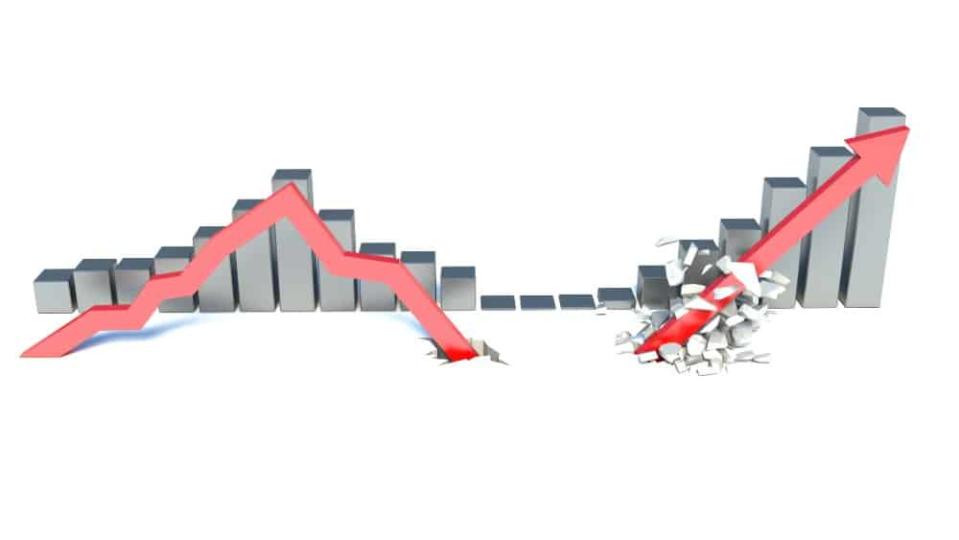Why This TSX Stock Is a Buy on the Dip

The recent selloff in the broader markets due to the COVID-19 outbreak did not spare any TSX stock, including Shopify (TSX:SHOP)(NYSE:SHOP). The stock fell over 14% this month after the e-commerce giant rolled back its 2020 financial guidance amid the rising number of coronavirus cases. Shopify had earlier given revenue forecast of US$2.13 billion to US$2.16 billion.
While challenges persist in the near term, the recent dip in Shopify stock provides a good entry point for long-term investors. Shopify shares, which reached as high as $593.89 on February 12, is currently trading at $357.65 as on April 3. Just before the recent plunge, Shopify reported upbeat fourth-quarter results, wherein sales grew by 47% to US$505.2 million and adjusted EPS rose 59% to US$0.43 per share.
Why this TSX stock?
Shopify has generated jaw-dropping returns (more than 1,292%) since listing on the TSX in 2015. The company’s GMV has grown at a breakneck pace. Meanwhile, Shopify’s revenues and gross profits consistently grew at a double-digit rate over the past five years. On the cost front, Shopify has successfully managed to lower expenses, which is encouraging. Investors should note that Shopify’s operating expense rate had declined from 58% in 2015 to 53% in 2019.
The multi-fold growth in Shopify stock is due to the consistent merchant volume growth, its strong competitive positioning, and expansion of its products and services in the international markets. The company continues to invest in its fulfillment centres and is accelerating in the delivery space in the U.S. markets. In June 2019, Shopify announced it will spend around $1 billion to build new fulfillment centres in the U.S. to compete with Amazon. Thanks to the company’s steep growth, Shopify is now considered as the second-largest e-commerce retailer in the U.S. after Amazon.
Shopify helps small- and medium-sized businesses to set up their online stores on its platform. It also offers online payment processing, which makes it even more powerful in the current scenario, which has forced customers to stay at home. With more users adding up over time, the Shopify platform will continue to strengthen.
E-commerce gaining traction
This TSX tech giant generates a significant amount of revenues from fees it charges merchants to sell and promote their products. In 2019, about 64% of its revenue came from GMV (gross merchandise volume) fees, while only 36% of its sales were dependent on subscriptions from merchants who sell their goods through their online stores on Shopify’s platform.
Shopify handles over 1.2 million merchants on its online selling platform. However, the current financial crisis due to COVID-19 would certainly hit its merchant solutions sales, as many businesses have scaled back their operations. A large number of small- and mid-sized online merchants are at risk, as they are dependent on procuring their goods from China or other countries in the east.
However, the lockdown has allowed many businesses to boost their sales by going online, which is where Shopify’s services are needed. Further, the demand for Shopify’s services is going to jump as we get past the pandemic. I see more and more companies embracing technology and investing in their online business to drive balanced growth even amid tumultuous times.
The post Why This TSX Stock Is a Buy on the Dip appeared first on The Motley Fool Canada.
More reading
CRA Delays Tax Deadline: Make Sure to Include These 2 Tax Deductions
Market Crash Alert: Royal Bank of Canada (TSX:RY) Stock Just Plunged 27%
Stock Market Crash 2020: Your Chance to Turn $50,000 Into $1 Million
John Mackey, CEO of Whole Foods Market, an Amazon subsidiary, is a member of The Motley Fool’s board of directors. David Gardner owns shares of Amazon. Tom Gardner owns shares of Shopify. The Motley Fool owns shares of and recommends Amazon, Shopify, and Shopify and recommends the following options: short January 2022 $1940 calls on Amazon and long January 2022 $1920 calls on Amazon. Fool contributor Sneha Nahata has no position in any of the stocks mentioned.
The Motley Fool’s purpose is to help the world invest, better. Click here now for your free subscription to Take Stock, The Motley Fool Canada’s free investing newsletter. Packed with stock ideas and investing advice, it is essential reading for anyone looking to build and grow their wealth in the years ahead. Motley Fool Canada 2020

 Yahoo Finance
Yahoo Finance 